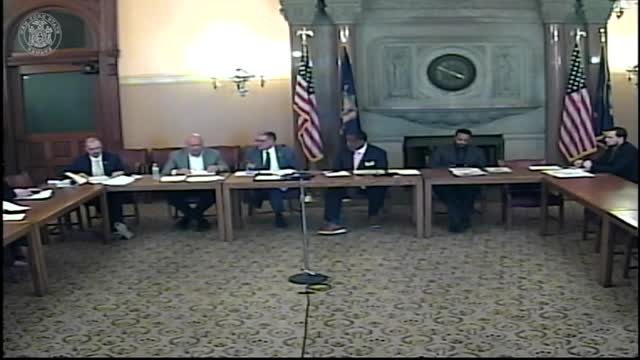Senate discussion addresses New York's energy storage and carbon reduction challenges
March 18, 2025 | 2025 Legislature NY, New York
This article was created by AI summarizing key points discussed. AI makes mistakes, so for full details and context, please refer to the video of the full meeting. Please report any errors so we can fix them. Report an error »

In a recent meeting of the Senate Standing Committee on Energy and Telecommunications, discussions centered on the future of energy storage and its implications for New York State's energy landscape. The meeting highlighted the importance of addressing greenhouse gas emissions, particularly methane and carbon, as the state moves towards cleaner energy solutions.
One of the key topics was the potential of battery storage systems. A participant raised concerns about the longevity and cost of current lithium battery technology, which typically lasts only 8 to 10 years before requiring replacement. This raises questions about the long-term financial viability of relying heavily on such technology for energy storage. The participant noted that while initial costs for battery systems can be high, there is optimism that prices may decrease as demand increases and technology advances.
The conversation also touched on the broader implications of energy generation methods, including the use of combined cycle plants. These plants not only generate electricity but could also be utilized to support local agriculture by providing fresh produce year-round, thus benefiting residents. This dual-use approach could help mitigate some of the environmental impacts associated with energy production.
Senators engaged in a detailed discussion about the costs associated with transitioning to cleaner energy sources. One senator referenced a significant financial estimate of $4.2 trillion for retooling energy generation and storage infrastructure, while another provided a lower estimate of $3.5 trillion based on their calculations. The disparity in these figures underscores the complexity of energy transition planning and the need for accurate data to inform policy decisions.
The meeting concluded with a recognition of the challenges ahead, particularly in balancing the need for sustainable energy solutions with economic considerations. As New York continues to lead in energy innovation alongside states like California and Massachusetts, the committee emphasized the importance of ongoing dialogue and research to navigate the evolving energy landscape effectively. The discussions set the stage for future legislative efforts aimed at enhancing energy efficiency and reducing greenhouse gas emissions in the state.
One of the key topics was the potential of battery storage systems. A participant raised concerns about the longevity and cost of current lithium battery technology, which typically lasts only 8 to 10 years before requiring replacement. This raises questions about the long-term financial viability of relying heavily on such technology for energy storage. The participant noted that while initial costs for battery systems can be high, there is optimism that prices may decrease as demand increases and technology advances.
The conversation also touched on the broader implications of energy generation methods, including the use of combined cycle plants. These plants not only generate electricity but could also be utilized to support local agriculture by providing fresh produce year-round, thus benefiting residents. This dual-use approach could help mitigate some of the environmental impacts associated with energy production.
Senators engaged in a detailed discussion about the costs associated with transitioning to cleaner energy sources. One senator referenced a significant financial estimate of $4.2 trillion for retooling energy generation and storage infrastructure, while another provided a lower estimate of $3.5 trillion based on their calculations. The disparity in these figures underscores the complexity of energy transition planning and the need for accurate data to inform policy decisions.
The meeting concluded with a recognition of the challenges ahead, particularly in balancing the need for sustainable energy solutions with economic considerations. As New York continues to lead in energy innovation alongside states like California and Massachusetts, the committee emphasized the importance of ongoing dialogue and research to navigate the evolving energy landscape effectively. The discussions set the stage for future legislative efforts aimed at enhancing energy efficiency and reducing greenhouse gas emissions in the state.
View full meeting
This article is based on a recent meeting—watch the full video and explore the complete transcript for deeper insights into the discussion.
View full meeting
